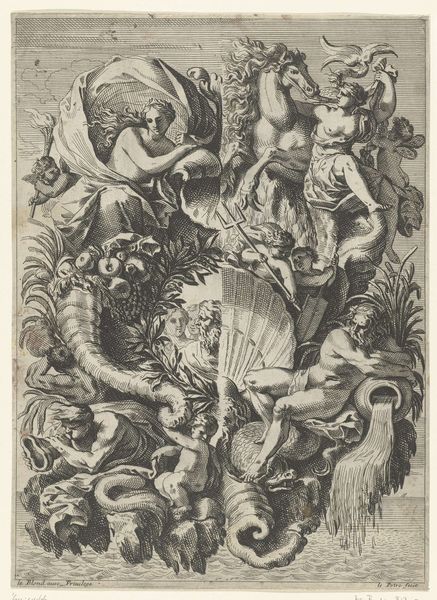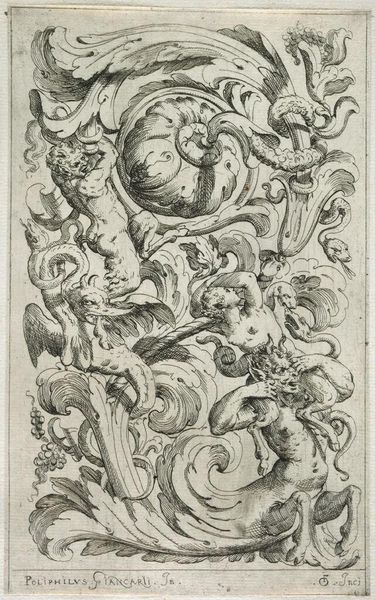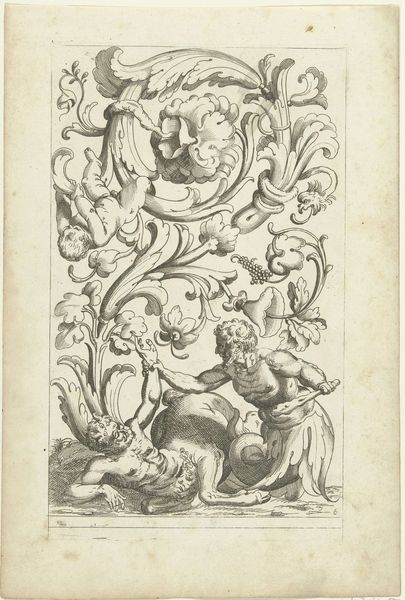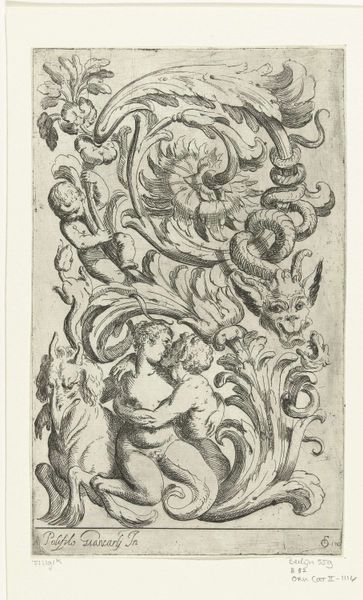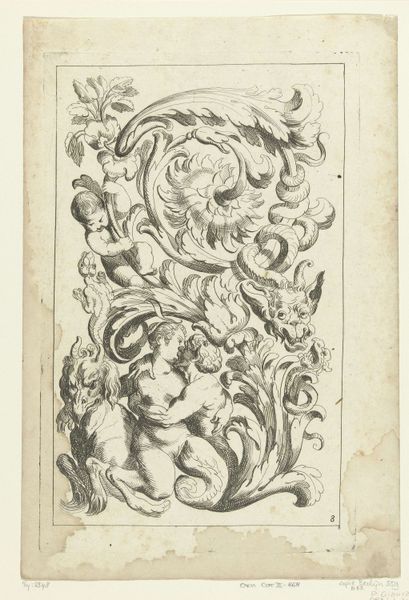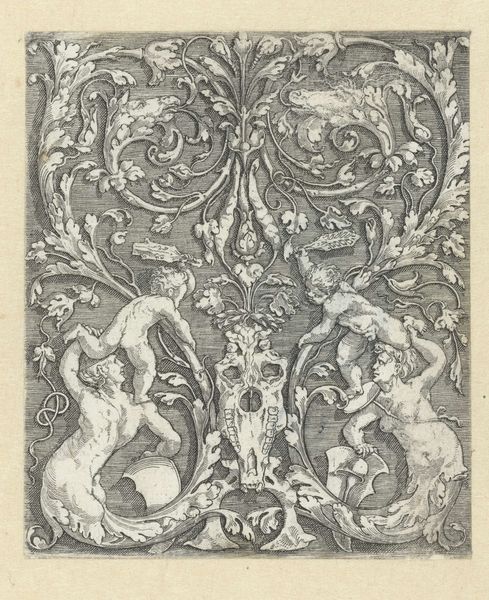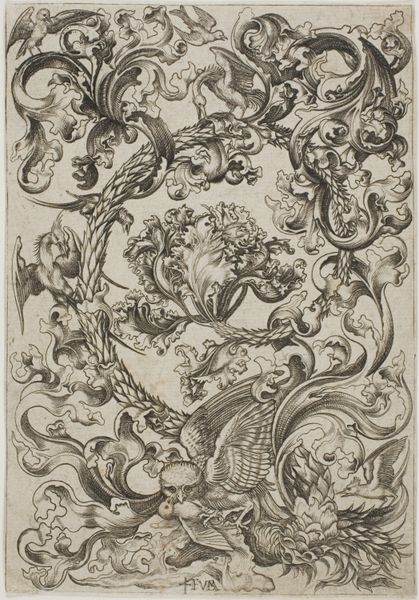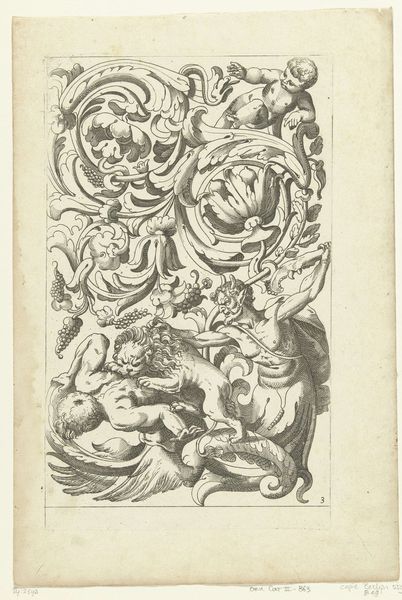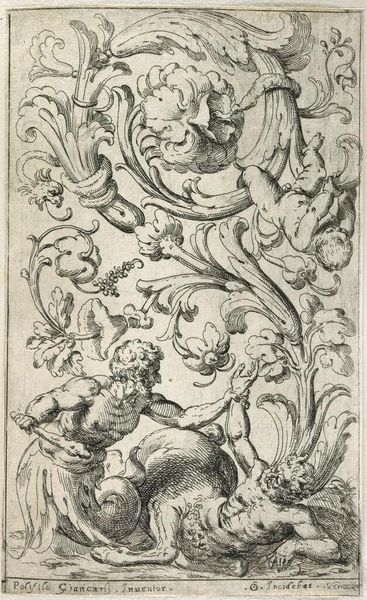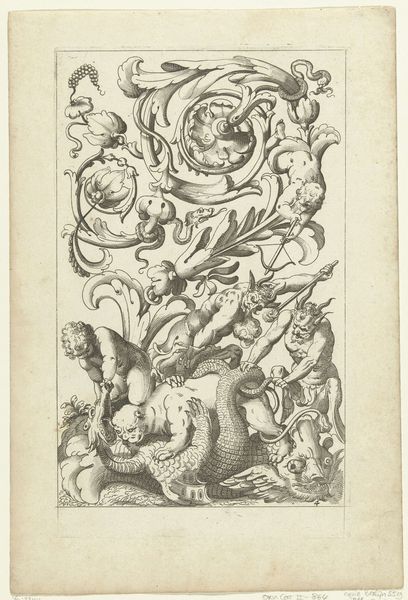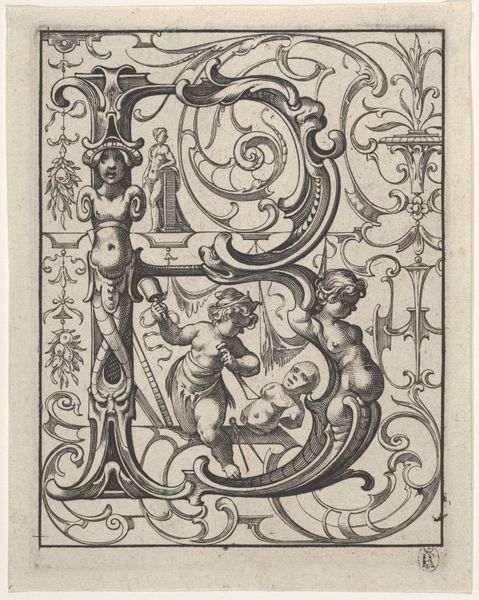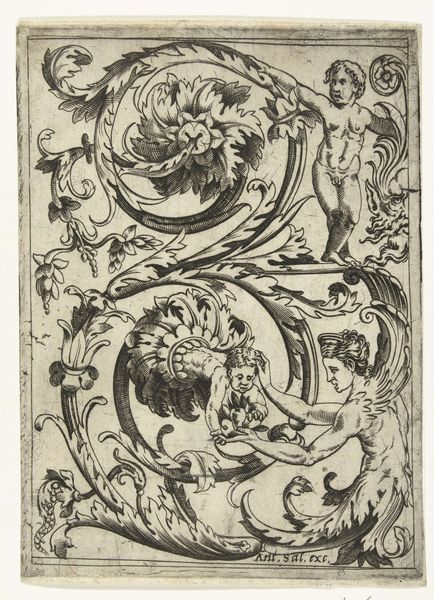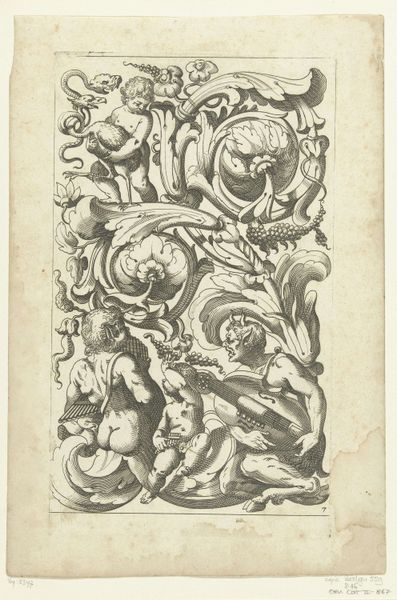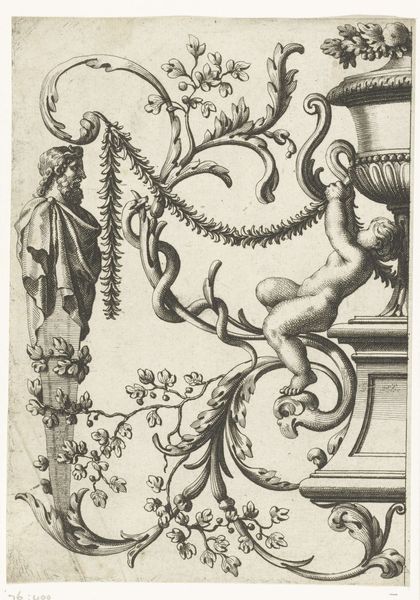
print, engraving
#
baroque
# print
#
old engraving style
#
figuration
#
history-painting
#
engraving
Dimensions: height 237 mm, width 161 mm
Copyright: Rijks Museum: Open Domain
Curator: Right, let’s consider this intriguing print, “Twee halve panelen” – Two Half Panels. It's an engraving that comes to us from somewhere between 1682 and 1734, attributed to Jean Lepautre, here in the Rijksmuseum. What’s your initial read? Editor: It feels incredibly ornate, almost claustrophobic. There’s so much detail packed in – swirling foliage, human figures emerging from the designs. It has a kind of theatrical excess. Curator: Absolutely. Lepautre was influential in the development of Baroque ornament. Prints like this weren't necessarily viewed as standalone artworks. Think of them more as pattern books for artisans – providing inspiration for furniture makers, sculptors, and interior decorators. These images shaped the aesthetic of the era. Editor: So these panels were never really “halves” meant to complete a bigger scene. It seems, with the presence of the sphinx-like figure and the satyr-esque man on opposite panels, Lepautre is playing with deeper symbols? A dichotomy of the mythical realm, perhaps? Curator: I'd agree that there are some cultural values layered there. While artisans looked at designs like this with a functional view, the popularity of the "grotesque" style from the early Renaissance onward—mixing classic, pagan imagery with foliage—shows how flexible classical imagery still was for new messaging. Editor: It's interesting to consider that the symbolism would resonate and perhaps reinforce the era's cultural identity, not only dictate practical skills. Those leafy motifs themselves, repeated endlessly, become powerful signifiers. Even the very act of decorating with such lavish detail—the political messaging of the decorative programs of Versailles would suggest such. Curator: Exactly. Even in printed form, designs like these contributed to a shared visual vocabulary. They weren’t neutral; they helped articulate power and social standing. Thanks for expanding the semiotic scope here. Editor: And thank you. It really brings home the realization of how artful the cultural sphere was, how it always leaves room to be read and to evolve.
Comments
No comments
Be the first to comment and join the conversation on the ultimate creative platform.
